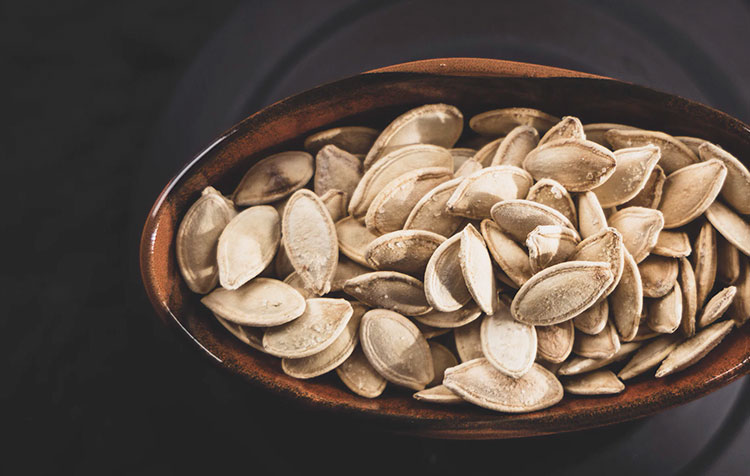You want to know more about omega 6 fatty acids? Then you will find it here! In this article I will tell you a lot of interesting information about the n-6 fatty acid and its subtypes.
At the beginning, I first summarize the basics in a brief profile of long-chain fatty acids and then go into more depth on the topics of intake, daily requirement, importance, overdose, deficiency and ways to meet the daily need. In addition, you will find special information for vegans and vegetarians and what forms of supplements can be useful.
Here is in advance a short Overview for you:
Notice: This article is not a substitute for medical advice, but only provides general information about omega-6 fatty acids. Please see your doctor if you feel unwell or want to prevent health problems with medical care.
Omega 6 PROFILE compact
Assignment: polyunsaturated fatty acids, long-chain fatty acids
Synonyms: n-6 fatty acids
Important for: Oxygen transport, cell membrane component, skin, blood clotting,
Daily requirement: Linoleic acid: 2.5 % of total calories1 or 10-17 g/day2,3
Recording: by ingestion
Overdose: No fixed maximum supply1,2,3
Deficiency symptoms: e.g. blood clotting disorders, susceptibility to infections, increased risk of heart disease
Food: Sunflower seeds, pumpkin seeds, walnuts, sesame seeds
Nutritional supplement: Mostly as capsules
Intake and forms of omega 6

The long-chain omega-6 fatty acids are subdivided into Different forms - the most important are Linoleic acid (LA) and Arachidonic acid (ARA). The human body can synthesize LA to ARA4LA should therefore be classified as essential and ARA as non-essential.5
Since the conversion of LA to ARA requires the same enzyme systems as omega-3 synthesis, the latter is inhibited. Therefore, a good Ratio during recording of omega 6 and Omega 3-Fatty acids(omega 6 to omega 3), for example, of 4 to 1.6
In addition, it is still important to know that omega-6 fatty acids have a pro-inflammatory and vasoconstrictor effect, which increases the risk of Heart disease increased. Therefore, care should be taken not to consume too much or too little of the polyunsaturated fatty acid. In general, we in western, industrialized countries tend to consume too much omega 6.7
How much omega 6 do you need?
According to the German Society for Nutrition (DGE) an intake of 2.5 percent of total calories is considered recommended for LA from the age of four. For Babies an increased requirement of 3.5 to 4 percent of total calories applies, dropping to 3.0 percent for infants 1 to 4 years of age.1 Specifically these are For adults and a caloric intake of 2,000 calories about 6 g of ALA. The European Food Safety Authority (EFSA) recommends a higher intake of 4 percent or 10 grams per day.3,5
In a position paper of the Academy of Nutrition and Dietetics values of 2 to 10 percent of total calories or even 5 to 17 grams per day are mentioned.2 No required intake was specified for AA, since the body can synthesize it itself with an adequate supply of LA.
What do we need omega-6 fatty acids for?
We need omega-6 fatty acids for various processes and activities in the human body. Among other things, the fatty acids are essential for the Transport of the oxygen and the Hemoglobin formation and also play an active role in the Blood clotting with. They also regulate the Cholesterol level in the blood.8
Furthermore, they are an important component for the Formation of the cell membrane, transport fat-soluble toxins to excretory organs and generally ensure the health of the skin. In men, the fatty acid is also used for Formation of sperm and testosterone needed.
Here again functions of n-6 at a glance:
- Oxygen transport
- Hemoglobin formation
- Blood clotting
- Regulation of the cholesterol level
- Structure of the cell membrane
- Transport of fat-soluble toxins to the excretory organs
- Skin Health
- Sperm ingestion and testosterone production
Is it possible to overdose with omega 6?
According to statements by EFSA, due to the insufficient data available, there are No official Tolerable Upper Intake Level (UL). No toxicity has been detected so far either.3 Since omega-6 and omega-3 metabolism compete for certain enzymes, as already mentioned, you should still not take too much omega-6, otherwise the ratio of polyunsaturated fatty acids will be severely imbalanced.
When does an omega-3 deficiency occur?
Since we in the industrialized nations tend to consume more omega 6 than we need, it therefore comes to only rarely lead to deficiency symptoms. Those who have a lot of stress, suffer from chronic inflammatory bowel diseases or lead an unhealthy lifestyle with little exercise, a lot of alcohol and smoking need more omega 6. The increased need can lead to a deficiency under certain circumstances.
Omega 6 deficiency is manifested by the following. Symptoms:
- weakened immune system
- increased risk of heart disease
- impaired wound healing
- Growth disorders
What are good SOURCES of long-chain fatty acids?

Basically, AA is found in animal products such as meat or eggs, while LA is found mainly in many plant foods, such as Nuts, seeds and oils is contained. Since we in Germany tend to consume more omega 6 than necessary, the exact omega 6 content is rather secondary. Instead, the ratio of omega 3 and omega 6 fatty acids is much more important.
Therefore, in the following list you will find foods with a good content of the long-chain fatty acids and an appropriate omega ratio:
- Hemp oil (56.0 g LA per 100 gram)
- Walnuts (41.5 g LA per 100 gram)
- hulled hemp seeds (27.46 g LA per 100 grams)
- Rapeseed oil (14.95 g LA per 100 gram)
- Soybean (9.8 g LA per 100 grams)
- Flaxseed (5.45 g LA per 100 gram
Tip: Foods with a high omega 6 content but a rather poor omega ratio are sunflower seeds, sesame seeds, poppy seeds, pine nuts, as well as sunflower seed, sesame and safflower oil. Therefore, I recommend rapeseed or olive oil as oil for frying or salads.
What do vegans and vegetarians have to consider regarding Omega 6?
The long-chain omega-6 fatty acid is divided into the fatty acids AA and LA. While AA is rather problematic because the fatty acid increases the potential for inflammation, LA is needed for many processes in the human body. Therefore, it is good that AA is mainly found in animal products such as meat or eggs and that the body can convert LA into AA.
This means that if you eat enough LA as a vegan, then you are also well supplied with the necessary amount of AA. With a balanced plant-based diet that includes nuts, seeds and oils, your supply of omega 6 is basically ensured. This is one of the reasons why Omega 6 is recommended for vegans by the DGE. Non-critical nutrient have been classified.9
Should one supplement omega 6?
I have already mentioned several times that most people take too much omega 6 rather than too little. Therefore, when it comes to omega supplements, I would rather focus on a good microalgae oil with omega-3 fatty acids. Because with such a supplement, you can optimize your supply and the ratio of omega fatty acids and get sufficient of the critical nutrient omega 3.
You can find more information about this in our article on the Omega 3 supply. There you will also find a corresponding Omega 3 supplementsthat I can recommend to you.
Omega 6? It all depends on the right ratio!
As you learned today, your supply of long-chain fatty acids depends primarily on the ratio of omega fatty acids with which you optimize the synthesis of fatty acids. With an intake of about 10-15 grams of LA per day, you are well supplied with omega 6, so that your heart health is also promoted.5
While omega-6 supplements tend not to be necessary, it can make sense to consciously include nuts, seeds and oils with a good omega ratio in your diet. In addition, I generally recommend a well-balanced diet and plenty of exercise in order to actively promote your health.
I welcome comments with questions, criticisms, or ideas on the topic of long-chain fatty acids!
All the best,

PS.: You want to know how to actively live healthier? Find out more in the linked article! You can find even more information on nutrient supply, for example, in our articles about Iron or Vitamin K. Have fun!
References:
1 German Nutrition Society: Fat, https://www.dge.de/wissenschaft/referenzwerte/fett/?L=0 [22 Dec. 2021].
2 G. Vannice, H. Rasmussen (2014). Position of the Academy of Nutrition and Dietetics: Dietary Fatty Acids for Healthy Adults. In Journal of the Academy of Nutrition and Dietetics 114 (1), pp. 136-153, available online: https://jandonline.org/article/S2212-2672(13)01672-9/fulltext. [22.12.2021]
3 European Food Safety Authority (2012). Scientific Opinion on Dietary Reference Values for fats, including saturated fatty acids, polyunsaturated fatty acids, monounsaturated fatty acids, trans fatty acids, and cholesterol, https://efsa.onlinelibrary.wiley.com/doi/epdf/10.2903/j.efsa.2010.1461. [22.12.2021].
4 S. Eilat-Adar, T. Sinai, C. Yosefy & Y. Henkin (2013). Nutritional recommendations for cardiovascular disease prevention. In Nutrients 5 (9), pp. 3649-3683, Available online: https://www.mdpi.com/2072-6643/5/9/3646/htm. [22.12.2021]
5 European Food Safety Authority (2009). Labelling reference intake values for n-3 and n-6 polyunsaturated fatty acids, https://efsa.onlinelibrary.wiley.com/doi/epdf/10.2903/j.efsa.2009.1176. [22.12.2021].
6 Center of Health: Sunflower Seeds - Healthy Energy Providers, https://www.zentrum-der-gesundheit.de/ernaehrung/lebensmittel/oelsaaten/sonnenblumenkerne. [22.12.2021].
7 Center for Health: Essential Fatty Acids, https://www.zentrum-der-gesundheit.de/ernaehrung/naehrstoffe/fette-uebersicht/fettsaeuren. [22.12.2021].
8 Deutsche Gesellschaft für Ernährung e. V.: Evidence-based guideline Fat intake and prevention of selected diet-related diseases, https://www.dge.de/fileadmin/public/doc/ws/ll-fett/v2/Gesamt-DGE-Leitlinie-Fett-2015.pdf. [22.12.2021].
9 Deutsche Gesellschaft für Ernährung e. V.: Supplement to the position of the German Nutrition Society regarding population groups with special nutritional needs, https://www.dge.de/wissenschaft/weitere-publikationen/dge-position/vegane-ernaehrung/?L=0 [Dec. 22, 2021].





